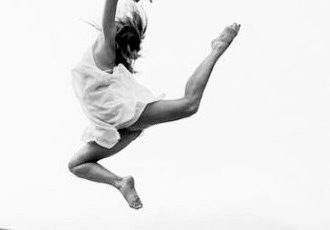Author Neil Nabbefeld, AdvDip PMT
This article is a bit ‘heady’ but try and stick with it. Learning conceptually is always empowering (“Give A Man A Fish vs. Teach A Man To Fish”) and once you get your brain wrapped around the ideas here, you’ll be able to apply them easily wherever you need to.
I learned long ago that all movement is created by our Intention. This mindful, energetic ‘tension’, created by the difference between where I am and where I want to be, is an important concept to teach to our clients and for them to become more aware of during their movement practice.
As obvious as the idea sounds, it leads to a profound understanding of the importance of mindfulness in exercise. It helps explain why poor intention leads to poor movement; little to no energy or interest is invested or created and it’s reflected in the poor organisation of the body. Doing the Pilates Teaser on the Reformer or a strong Snatch in Powerlifting, both require a preparation, focus and clear intent in order to be performed properly, safely and with an economy of effort and movement.
It helps make sense of Counter Tension which is used to anchor and move opposing limbs and the spine. Clear Intention also improves your Spatial Awareness which is vital to creating the ability to self-regulate your movement by putting the power and responsibility squarely on your shoulders (metaphorically speaking).
Make no mistake; this is amazing stuff and not limited to Pilates or Movement Therapy. It is inherent in every move you make. And since all movement is a metaphor for your life, becoming aware of your Intention has applications to creating clarity in every aspect of your life.
5 Ways To Harness Your Intention
- Know why you are doing it. Adults in particular need to understand why they are being asked to do something or they will not do it with the necessary intention and will reap no rewards for it’s practice. It’s a well documented theory, and hardly a new idea, that we need to understand the relevance of what we do. Ask questions, disagree and discuss. Pilates instructors have a zillion reasons why you need to be doing The Hundred and we are happy to let you in on it. Once you’re on board with the ‘why’, you’ll be clearer about the ‘do’.
- See the movement you want to make before you make it. Depending on your Learning Preference, you may need to watch someone do a movement before you can begin understanding it. Others will need to have it explained to them. Whatever your preference, it’s ok to take the time to understand it before attempting it. And once you’ve taken that time, it’s valuable to close your eyes and practice it in your mind BEFORE you actually do it. This is called Mental Practice. Be clear about the exercise or movement’s beginning, it’s middle and it’s end. In your minds eye, ‘see’ the limbs reaching to particular spots on the wall or ceiling. Pretend you are using your sense of weight to feel the bits that are meant to be evenly loaded or not…and work to maintain them. And pay attention to the quality of the movement you want to make. Once you’ve done that virtual, mental practice a few times, then give it a real go. You’ll be surprised at how clear your body moves when it’s given clear instructions.
- Go slow before you go fast. Faster movements require time to master and coordinate; they happen on a subconscious level, like a reflex. If you are looking to learn something new or improve something old then break it down to smaller, quieter, less loaded and slower bits. Once the improved pattern is starting to establish then you can look at picking up the pace to a more functional speed. This can take 1 week to 1 year and can’t really be fast-tracked. For example, young weightlifters and dancers spend 100’s of hours and years doing preparatory work before attempting the more ‘usual’ and speccy work of their sport. Your body has it’s own unique schedule of improvement so be patient. I also recommend that all of your physical efforts need to be done with a sense of fluidity to keep jarring, damaging shifts from hitting your joints. Moving slower at first will help establish this fluid use of the body before moving at a faster pace.
- Work in a quiet space. Music, light, noise, temperature. Dial down the distractions so you can focus on the task at hand. Eventually you’ll be able to use your intention in a busy, not-so-perfect space or on the competitive playing field.
- Practice. This applies to practicing repertoire as much as practising your focus and awareness of your movement during the repertoire. There is no substitute for the time spent honing your awareness and it does pay off. It can be a bit frustrating if you aren’t progressing at the speed you wish but you will get there eventually. As a wise person once said, “It takes the time it takes”.
Pilates Principles
It’s not so strange that the generally accepted 6 Principles of Pilates (Breath, Flow, Control, Centre, Concentration, Precision) are interwoven in the use of Intention. Joseph knew this and you’ll experience it when helped by an excellent teacher.
This is more than just learning cool new repertoire or playing on a new piece of equipment or trying the latest fad Group Class. This is what excellent Pilates is all about and where the magic really happens.
Talk to your instructor about exploring and clarifying these concepts within your body. You will not regret it.
Be well!





